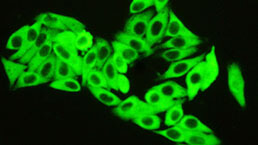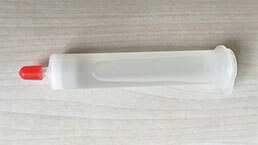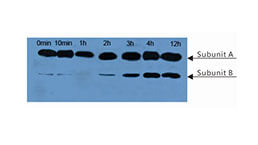Polyclonal Antibody to Tetrahydrobiopterin (THB) 

BH4; Kuvan; Sapropterin
- UOM
- FOB US$ 141.00 US$ 329.00 US$ 470.00 US$ 1,175.00 US$ 4,700.00
- Quantity
Overview
Properties
- Product No.PAG421Ge02
- Organism SpeciesPan-species (General) Same name, Different species.
- ApplicationsELISA
If the antibody is used in flow cytometry, please check FCM antibodies.
Research use only - DownloadInstruction Manual
- Category
- SourcePolyclonal antibody preparation, Host Rabbit
- Ig Type IgG, Potency n/a
- PurificationAntigen-specific affinity chromatography followed by Protein A affinity chromatography
- LabelNone
- Immunogen CPG421Ge21-OVA Conjugated Tetrahydrobiopterin (THB)
- Buffer Formulation0.01M PBS, pH7.4, containing 0.05% Proclin-300, 50% glycerol.
- TraitsLiquid, Concentration 0.5mg/mL
Sign into your account
Share a new citation as an author
Upload your experimental result
Review

Contact us
Please fill in the blank.
Specifity
The antibody is a rabbit polyclonal antibody raised against THB. It has been selected for its ability to recognize THB in ELISA and CLIA.
Usage
Enzyme-Linked Immune Immunosorbent: 100-1000ng/mL;
Optimal working dilutions must be determined by end user.
Storage
Store at 4°C for frequent use. Stored at -20°C in a manual defrost freezer for two year without detectable loss of activity. Avoid repeated freeze-thaw cycles.
Stability
The thermal stability is described by the loss rate. The loss rate was determined by accelerated thermal degradation test, that is, incubate the protein at 37°C for 48h, and no obvious degradation and precipitation were observed. The loss rate is less than 5% within the expiration date under appropriate storage condition.
Giveaways
Increment services
Citations
- §¥§Ö§æ§Ú§è§Ú§ä §ä§Ö§ä§â§Ñ§Ô§Ú§Õ§â§à§Ò§Ú§à§á§ä§Ö§â§Ú§ß§Ñ §á§â§Ú §ê§Ú§Ù§à§æ§â§Ö§ß§Ú§Ú¡ª§ß§à§Ó§Ñ§ñ §Þ§Ú§ê§Ö§ß§î §Õ§Ý§ñ §á§Ö§â§ã§à§ß§Ú§æ§Ú§è§Ú§â§à§Ó§Ñ§ß§ß§à§Û §ä§Ö§â§Ñ§á§Ú§Ú
- Methylenetetrahydrofolate dehydrogenase-1 (MTHFD1) 1958 G> A genetic polymorphism (rs2236225) is associated with lower schizophrenia risk: Preliminary study








